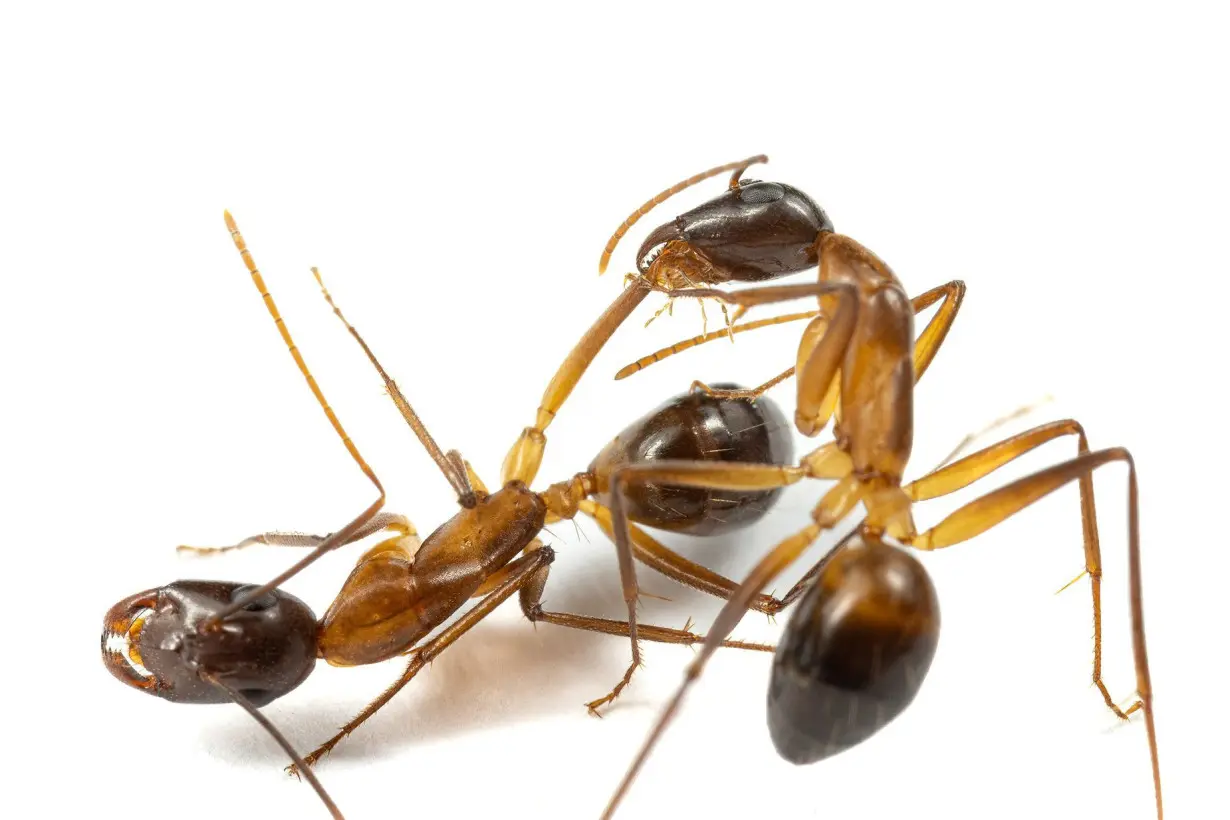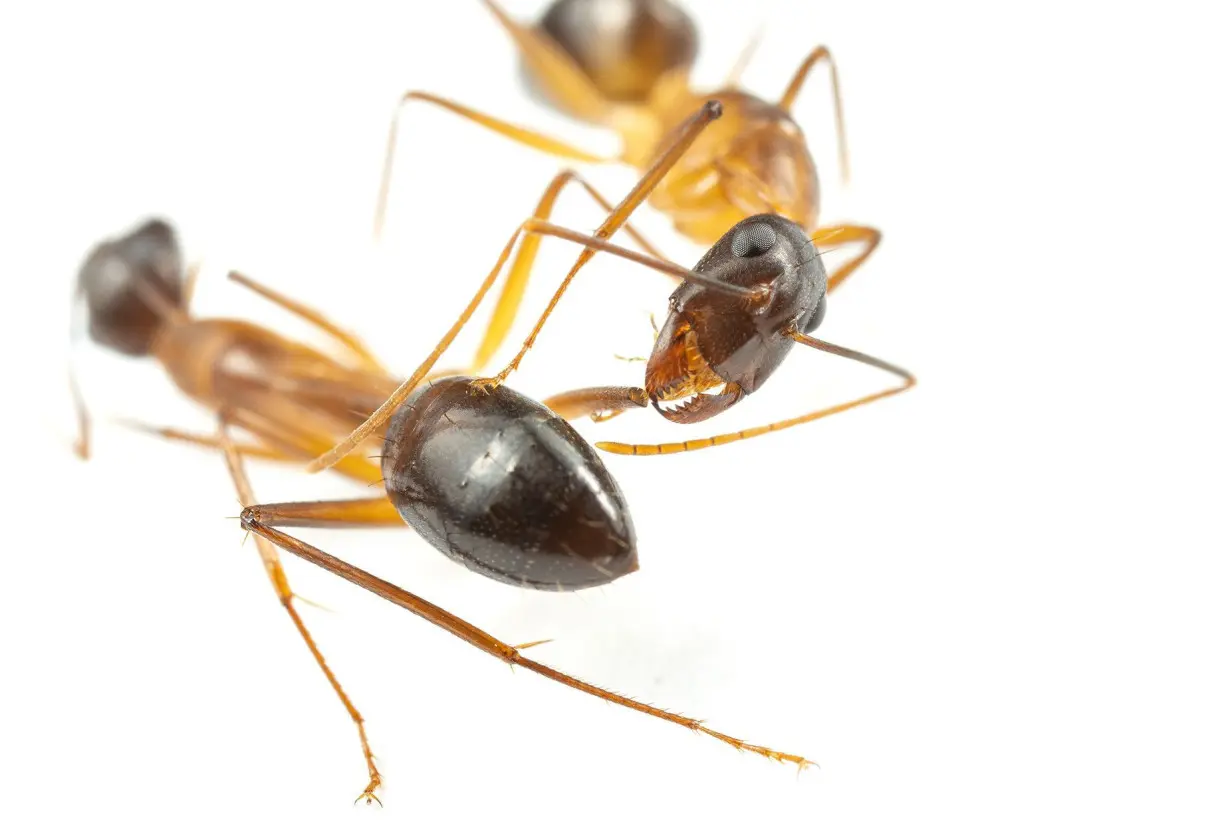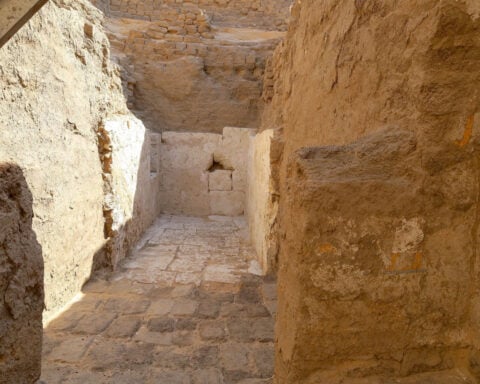(CNN) — Humans aren’t the only ones capable of performing amputations to save lives.
Florida carpenter ants have been observed biting off the injured limbs of nestmates, depending on the location of the wounds, to help their counterparts survive, according to a new study.
About 90% to 95% of the ants receiving amputations make it through the process and continue with their duties within the nest just fine despite losing a leg, researchers found.

The study, published Tuesday in the journal Current Biology, builds on previous findings released in 2023 by the same international team of scientists.
That research found a different ant species called Matabele ants, or Megaponera analis, use their mouths to secrete antimicrobial compounds to cleanse injuries and prevent potential infections. The compounds are produced by what’s known as metapleural glands.
Most ants have these glands. But over time, some species — including Camponotus floridanus, also known as carpenter ants — have evolutionarily lost them.
Most of the ant species lacking metapleural glands are arboreal, which means they live in trees, said lead study author Erik Frank, a behavioral ecologist at the University of Würzburg in Germany’s state of Bavaria.
“We think that their arboreal lifestyle might expose them to less pathogens than colonies living underground,” Frank said.
Frank and his colleagues had planned to keep studying the Matabele ants on the Ivory Coast when the pandemic struck. As a result, the team shifted to study the common carpenter ants available in its lab.
“I wanted to see how an ant species that cannot use antimicrobial compounds to treat wounds would care for their injured,” Frank said.
The researchers weren’t prepared for what they observed: a type of surgical intervention previously only seen in humans.
Injury-prone ants
Reddish-brown Florida carpenter ants, which reach about 1.5 centimeters (about three-fifths of an inch) in length, can be found nesting in rotting wood throughout the southeastern United States. They have to defend their nests against rival ant colonies, which can result in injuries.
Study coauthor Dany Buffat, a graduate student at Switzerland’s University of Lausanne, first observed the ants carrying out the wound cleaning and amputation measures.
“The biggest surprise clearly was the fact that they do amputations in the first place,” Frank said. “I never expected this and in fact when our (master’s student) Dany Buffat first described the behavior to me, I did not believe it. Only when he showed me the videos did I truly appreciate what we had stumbled upon.”
As the team observed the ants in action, senior study author Dr. Laurent Keller, an evolutionary biologist at the University of Lausanne, noted another surprise: The ants only carried out an amputation if the leg injuries occurred on the thigh, or femur. After biting off the leg, the ants would use their mouthparts to lick the wound clean and likely remove bacteria.
But if the injury was located on the lower leg, or tibia, the ants would only intensively lick the wound, resulting in a survival rate of 75%.
To understand why the ants were so specific in their ministrations and recreate the injuries in a lab setting, the researchers would remove a single ant from the nest, working with small colonies of 200 ants, and use microscissors to make controlled cuts on the ant’s leg.
“Beforehand, we would put the ant on ice for a few minutes so it would calm down and be easier to manipulate,” Frank said. “We would carefully take one out of the nest, put it on ice and then cut the leg. Once the ant woke up again (after another few minutes) she would be released back to the colony to be with her nestmates.”
For the ants with femur or tibia injuries that went untreated in isolation, less than 40% and 15% survived, respectively.
The team also carried out CT scans of the ants to get a closer look at the insects’ injuries
and how their bodies respond. A multitude of muscles within the ants’ thighs ensure that a
fluid similar to blood, called hemolymph, circulates. While ants don’t have humanlike
hearts, they do have several heart pumps and muscles throughout their bodies that carry out the same function.
Injuries to the thigh hinder that circulation, Frank said, and because the blood flow is reduced, bacteria can’t circulate from the wound and through the body as quickly, which means that an amputation can prevent the spread of bacteria throughout the ant’s body.
Meanwhile, the ants’ lower leg doesn’t contain any muscles necessary for circulating blood. But any wound there would quickly introduce bacteria to the body, and there wouldn’t be time for an amputation.
“In tibia injuries, the flow of the hemolymph was less impeded, meaning bacteria could enter the body faster. While in femur injuries the speed of the blood circulation in the leg was slowed down,” Frank said.
The researchers observed that ant-assisted amputations took about 40 minutes to complete, which is why the insects appeared to opt for femur amputations, but not tibia amputations.
“Thus, because they are unable to cut the leg sufficiently quickly to prevent the spread of harmful bacteria, ants try to limit the probability of lethal infection by spending more time cleaning the tibia wound,” Keller said.
Decoding ant behavior
The researchers are still trying to piece together the complexities underlying this seemingly innate ant behavior.
“Workers must have learned over evolutionary time that amputation was an efficient way to prevent infection and that it increased colony productivity by increasing the number of workers that could contribute to colony tasks,” Keller said.
These amputations are considered altruistic behavior because the ants have to expend time and energy to help others, Keller said.
“The fact that the ants are able to diagnose a wound, see if it’s infected or sterile, and treat it accordingly over long periods of time by other individuals — the only medical system that can rival that would be the human one,” Frank said.
But Frank said he doesn’t think the ants consciously know what to do. Instead, it may be more instinctual, similar to how humans bring their fingers to their lips after a paper cut.
“We will simply instinctively put the finger in our mouth and suck it and not actively think that we want to apply the antiseptic proteins in our saliva on the wound to inhibit an infection,” Frank said. “It’s likely similar for the ants. There was a strong enough evolutionary pressure for them to show two different behaviors to two different types of wounds to maximize the chances of survival for their (nestmates). How they are able to tell them apart is a different question and one I am currently working on.”
Now, the researchers want to find more examples of wound care, not just in ants, but across the animal kingdom.
“We will keep studying wound care behavior in other ant species and try to understand its evolutionary origins,” Frank said. “How did the ancestral wound care behavior look like? Why do some amputate while others use antimicrobials?”
The-CNN-Wire
™ & © 2024 Cable News Network, Inc., a Warner Bros. Discovery Company. All rights reserved.

 Trump has begun another trade war. Here's a timeline of how we got here
Trump has begun another trade war. Here's a timeline of how we got here
 Canada's leader laments lost friendship with US in town that sheltered stranded Americans after 9/11
Canada's leader laments lost friendship with US in town that sheltered stranded Americans after 9/11
 Chinese EV giant BYD's fourth-quarter profit leaps 73%
Chinese EV giant BYD's fourth-quarter profit leaps 73%
 You're an American in another land? Prepare to talk about the why and how of Trump 2.0
You're an American in another land? Prepare to talk about the why and how of Trump 2.0
 Chalk talk: Star power, top teams and No. 5 seeds headline the women's March Madness Sweet 16
Chalk talk: Star power, top teams and No. 5 seeds headline the women's March Madness Sweet 16
 Purdue returns to Sweet 16 with 76-62 win over McNeese in March Madness
Purdue returns to Sweet 16 with 76-62 win over McNeese in March Madness








